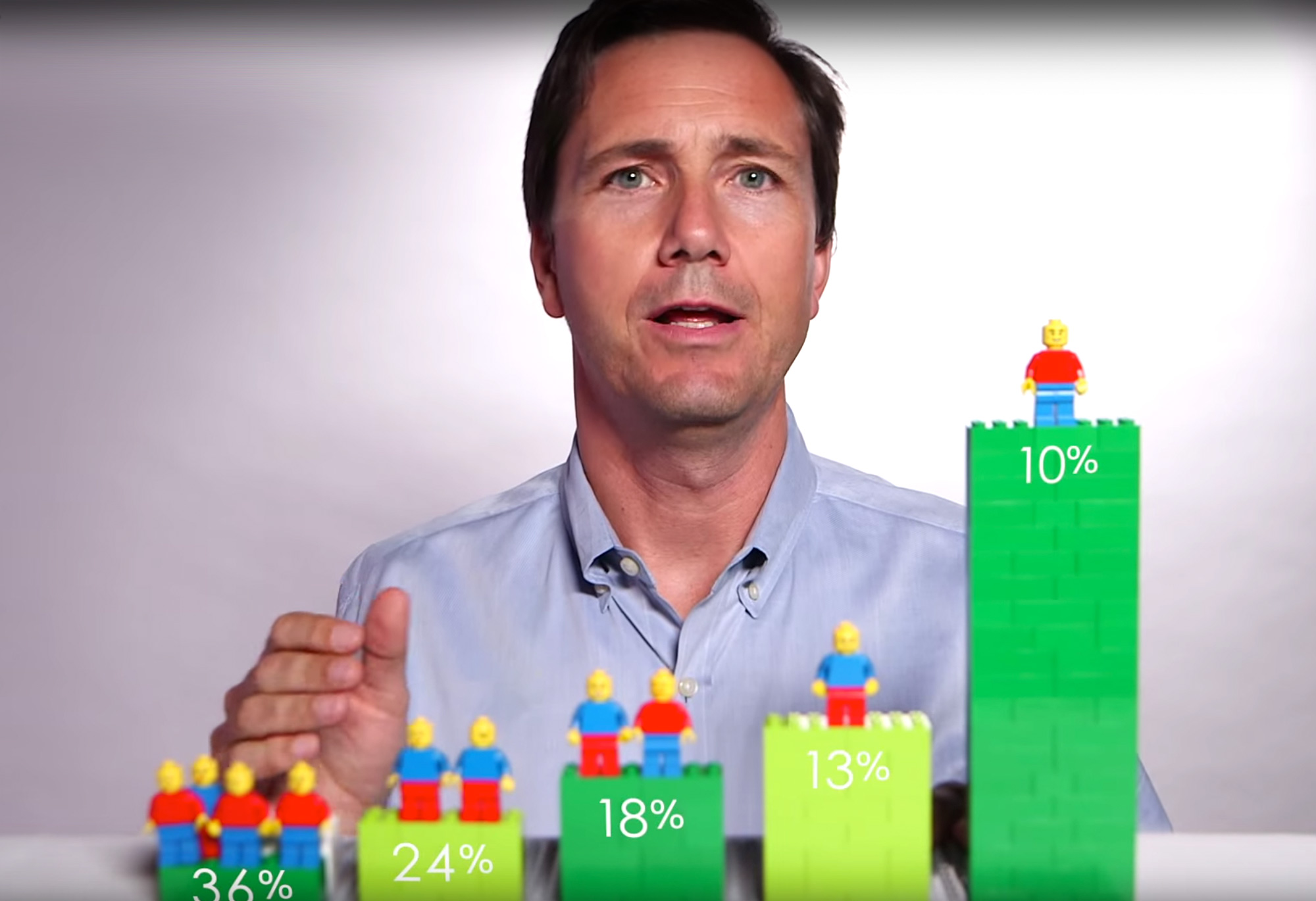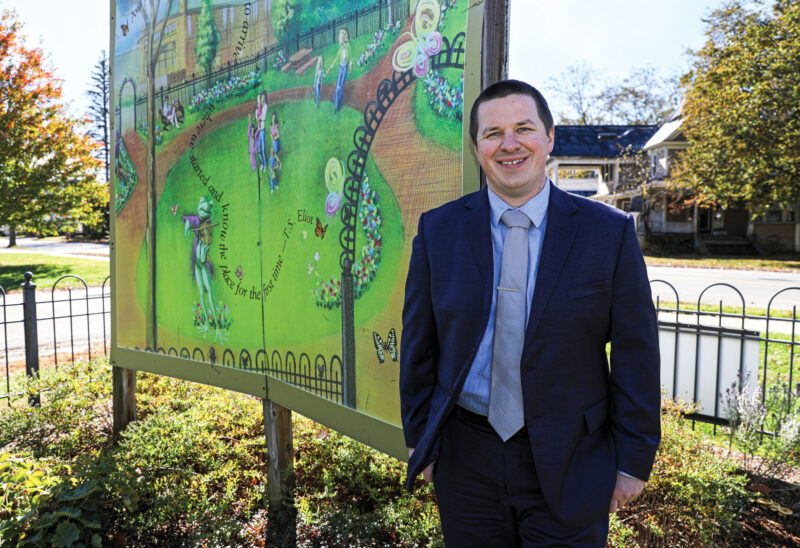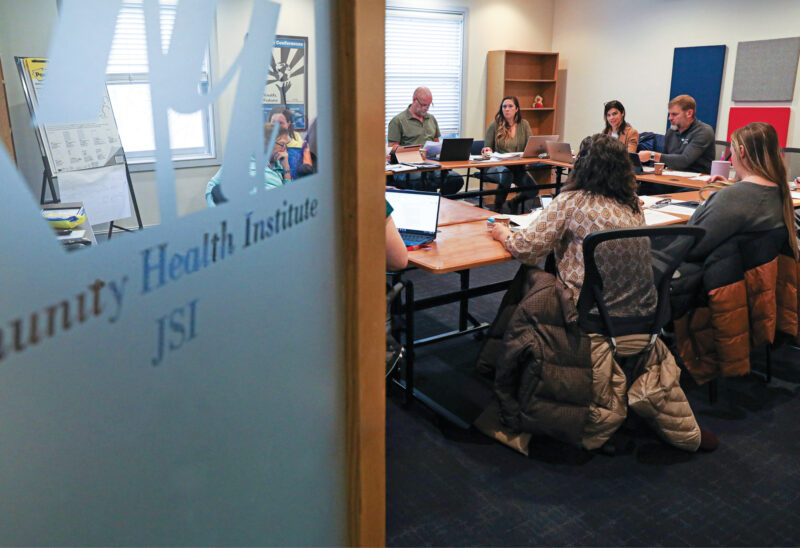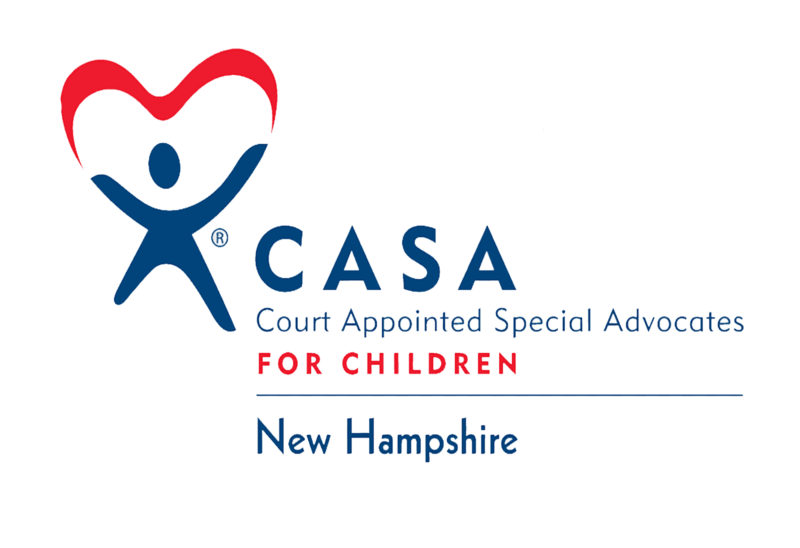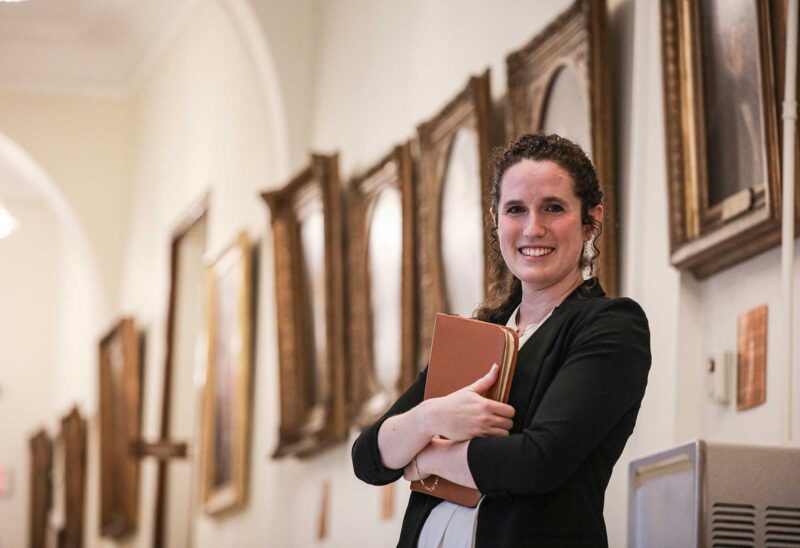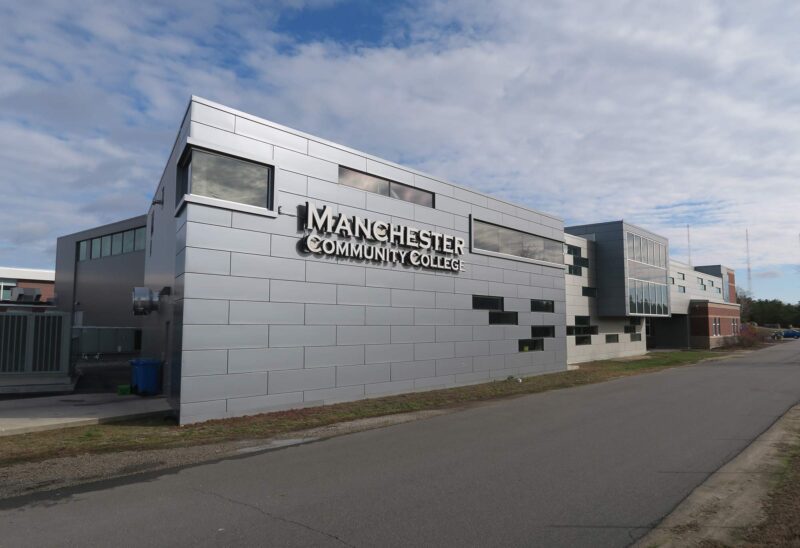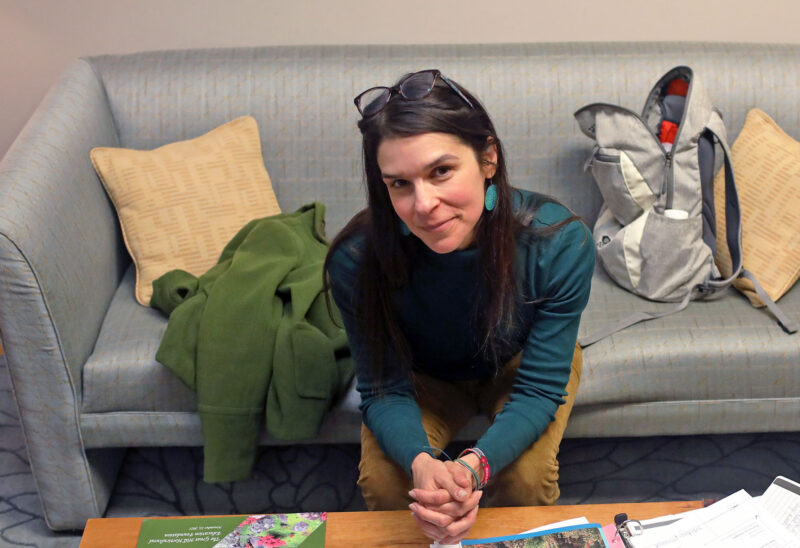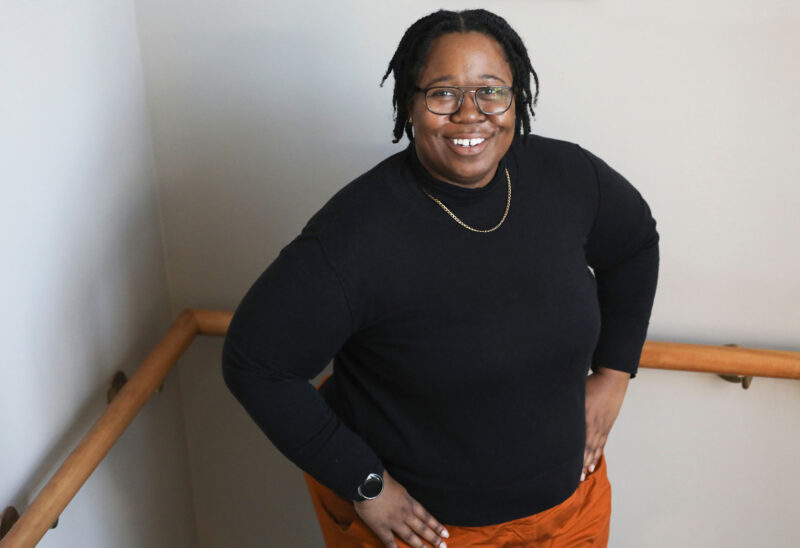We might be living in the era of the data-wonk-as-superstar (Does the name Nate Silver ring a bell, anyone?) Richard V. Reeves of the Brookings Institution is a senior fellow in Economic Studies, policy director of the Center on Children and Families, and editor-in-chief of the Social Mobility Memos blog. His research focuses on social mobility, inequality, and family change. He is a newly minted U.S. citizen and former director of strategy to the U.K.’s Deputy Prime Minister. His writing has been published widely in scholarly journals and the popular media – including the Wall Street Journal Washington Wire, The Guardian and The New York Times. He will be speaking at the Charitable Foundation’s annual “Leadership Summit” for board members and regional advisors in October. We caught up with him by phone from his office in Washington, D.C. We set out to ask him five questions, but would have liked to ask 20. We stopped, reluctantly, at six. Here is an abridged transcript of our conversation:
You’ve got this brilliant three-and-a-half minute YouTube video demonstrating with Legos (and Lego people) the inequities in economic mobility in this country. What do you hope people will take from that, and do as a result?
The purpose there is to get people to think about relative mobility…that’s a different measure from general rising prosperity. This is much more about the extent that the status of one generation is affected by the status of the previous one. I wanted people to think about mobility from that perspective. What are the things that are associated with people being stuck? I wrote a long piece for Esquire that was just called “Stuck” [examining] this issue of stickiness at the bottom and people being stuck in place….The bottom rung of the income ladder is particularly sticky, and particularly sticky for certain income groups and I wanted to draw attention to that and to those groups.
I hope it would matter to everyone everywhere in America and the reason I would say that is there is something quintessentially American about the idea that birth is not destiny. It’s the nation that is founded on anti-hereditary principles….So the idea of inherited status or evidence that any Americans anywhere are stuck on the rung of a ladder by the lottery of birth…is that the kind of America that we all want to live in? I don’t think we should know with as much statistical precision as we do where we are likely to end up [based on where we started] …. That’s when you become a class-bound society…and then you’re something else. Then you’re Europe. If you’ve got stickiness, you’ve got a problem…. In the long run, there is pretty good evidence in my view that it’s just not good for the dynamism of your economy to end up with this much stickiness.
Your upcoming book, “Dream Hoarders” talks about how “opportunity hoarding” by the upper middle class makes it harder for those in lower classes to move up the mobility ladder. You wrote recently, “if we are looking for the face of inequality, don’t look up, look straight ahead: in the mirror.” Say more about that – what do you mean by “opportunity hoarding” and what effect is it having on social mobility?
The starting point is to say that the top fifth of the population, by any measure – income, education, wealth – are separating away from the rest of society. There is a rising or hardening class barrier about 80 percent of the way up the distribution.
Part of my purpose is to get people who don’t consider themselves to be rich and to be part of the inequality problem [to recognize that] we really are….The ‘99 percent’ way of framing inequality lets too many of us off the hook….Everybody thinks the rich should pay more in tax, the problem is nobody thinks they’re rich. And that is a fundamental problem.
[Opportunity hoarding] is the ways in which we hold some opportunities for ourselves and our kids in way that would not pass the test of competitive fairness. One is the way that we use zoning policy and particularly exclusionary zoning. One of the ways you can get a good education is by buying an expensive house near a school…the trend in education [attainment] by income is more about the segregation of the affluent. It locks out a big part of the housing market for pretty much everybody else. And things like legacy preferences in admissions at colleges – symbolically, it is rather shocking that that is still seen as socially acceptable in 21st century meritocratic America. Or informal work opportunities and internships, some of the ways that internships are made available to people are unfair…. I am trying to make us think about what are some of the ways we behave in an anti-competitive way, that we rig the market. Let’s at least stop rigging the game against some people.
The popular narrative talks about income inequality in terms of the “top 1 percent” and everyone else in the “bottom 99 percent,” but you argue that we should be talking about the “top 20 percent.” Why?
That distracts from the economic separation that has been taking place around the 20 percent point. The top 20 percent in terms of household income right now [is] households with income of more than $110,000 (that’s just straightforward household income). When you look at the trends in not only income and wealth but things like family formation, levels of education, neighborhood segregation…the top fifth is where I see the fracture opening up in American society…
The danger is it kind of makes everyone else…gives them a permission slip to resist redistributive policies: ‘I think the rich should pay more but that doesn’t include me…’ There are a number of people in the top who have convinced themselves that they are really struggling: ‘by time we pay for our mortgage and our school fees we can barely get by.’ Well, okay…Maybe you don’t need to act as if you are under siege here.
There has been no increase in income inequality in the bottom 80 percent in the past 30 years. Below the 80th percentile looks exactly the same today as it did in the late 70s. It’s the gap between the upper middle class and everybody else….We have segregated ourselves away from the mainstream of American society.
“There is something quintessentially American about the idea that birth is not destiny.”
Richard V. ReevesTweet This
You were a member of the AEI/Brookings Working Group on Poverty and Opportunity that produced “Opportunity, Responsibility and Security, a consensus plan for reducing poverty and restoring the American dream.” The authors identified opportunity, responsibility and security as values that ALL Americans actually share, regardless of political or philosophical stripe. Tell me about why those three things became the focus of the report that you produced and why it is so important to start this conversation from that common ground.
It was important to start the conversation from values and where people are coming from in terms of the values that underlie the conversations that we were about to have about policy. And that is true for policy conversations about a whole range of things – whether it’s a higher minimum wage or access to contraception….It was incredibly important to our process [to discuss] what are the values we all care about why do we care about them and how does that affect what we think about policy?
The second part was what then are the values that specifically we think will animate our work and that people will share? And that’s how we arrived at the values that we mention.
I think policy discussions often get distorted by subterranean values differences….There is no such thing as a value-free policy…these values can break along kind of traditional partisan lines but can cross them as well.
At the end of your Lego video, you say “America has a dream of equal opportunity and we’re a very long way right now from that dream. We have a big problem and we need big solutions.” People are hungry for those solutions. What are some of the promising ones, as you see them?
There is so much, of course. We don’t lack ideas for what to do. We very often lack the political will and the collective collaboration required to make it happen. I can point to some areas:
Family instability is a huge problem….We have a significant problem with unintended pregnancies in 20-somethings.
Home visiting programs have shown real promise, and pre-K.
I am very interested in programs that try to recruit teachers. Good teachers are the ultimate scare resource in K-12 education.
Community colleges are the Cinderella of the American opportunity structure….The pedestal that the four-year year college degree has been put on has been very damaging….We may not need k-16 education, but we sure as hell need k-14 education.
And there is plenty more.
What role can community foundations, and the networks that they represent, play in working toward those solutions?
Increasingly, these issues are local and regional issues. There are huge variations in mobility patterns between different parts of the U.S. and hugely different factors bearing on that in different places….So you can move the needle on some aspects of opportunity much more easily on the community level than the national level.
Community foundations as brokers, as conveners, as conscience-prodders, as data-collectors, as incubators, as evaluators, as partners can actually create a space to do really good work at a community level….Community foundations, to the extent that they are kind of trusted anchor institutions, they can say, ‘look how can we move the needle? Let’s find out what the problem is and identify the three or four [things to work on.]’ It takes institutions that are generally independent, generally trusted and have the long-range interest and vision to be thinking about this to move the needle….If not community foundations, who? And if not now, when?

